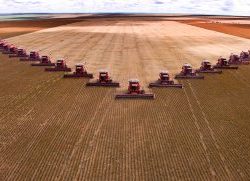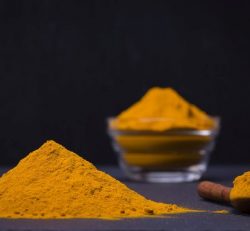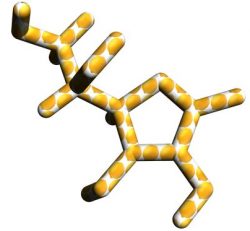HO CHI MINH CITY IS ALSO INTO PIGS
It’s not only commercial parties that are making Vietnam’s swine industry boom. Ho Chi Minh City is as well – and has invested in an entire integration of the size of 11,000 sows. Pig Progress took a look in a project that was started in 2016.
The Vissan Group is a well-known meat brand in Vietnam, known for quality products. The integrator currently consists of 3 slaughterhouses all over the country, one near Hanoi, one near Da Nang in the middle and a third near Ho Chi Minh City. The one in the south has its own swine production facility as well, where the 2 slaughterhouses in the middle and north just acquire pigs from contract farmers.

An outlet of Vissan in downtown Ho Chi Minh City. Photo: Vincent ter Beek
What is quite remarkable about the integration, is that the driving force behind it is Vietnam’s largest municipality: Ho Chi Minh City. That is related to the fact that the pig market in Vietnam is usually very volatile, leading to situations of strong oversupply as well as shortages and consequently, to strong differences in prices paid for pigs. At consumer level, however, prices stay relatively flat. In an attempt to control the volatility in the market, the city decided to embark on setting up the Vissan Group, as soon as changing legislation in communist Vietnam made that possible in 2000. Over the years, the Vissan Group’s farm grew out to become a 4,000 sow farrow-to-finish farm in Binh Duong province.
Now that is all about to change, as Vissan has an ambitious aim. Seeing that Thai agribusiness Charoen Pokphand is expanding strongly in southern Vietnam, Vissan also felt the need to grow. Therefore the Vissan Group formulated an aim: to control roughly 30% of the city’s total pork market by 2020. This applies to both fresh meat as well as packaged or frozen meat. Traditionally, a large part of the pork consumed in Vietnam is bought at the wet market, for which pigs need to be slaughtered at midnight. That way, carcasses can be sold on the wet market as from early in the morning.

Pigs in transport at the farm in Binh Thuận province. Photo: Bruno Silva
New facility in 2016
In order to be able to control and supply a large amount of pork to Ho Chi Minh City, the Vissan Group invested recently in a new, large-scale project in Binh Thuận province, about two hours’ drive east of the city. Its existing older farm will gradually be scaled down as it is close to residential areas – the new facility will take over a large part of the operations. Jointly, the two complexes will eventually be an 11,000 sow farrow-to-finish operation.
The facility is located at the end of a straight, sandy road. The facility can be found on a long, slim strip of land, hence all farm buildings are located behind one another. At the time of the visit, there were 1,200 sows, 1,000 gilts and 200 grandparent sows that had just been transported from the United States. In addition, there were about 10,000 grower and finisher pigs. A brand new slaughterhouse, which can deal with the expanded capacity, will complete the project in this year.

The Binh Thuận facility is built on a long strip of land, hence all buildings are located behind each other. Photo: Vincent ter Beek
Sows and piglets
The sows at the farm are a crossbreed of Landrace, Duroc and Yorkshire. They get vaccinated for Foot-and-Mouth Disease (FMD), Classical Swine Fever (CSF), Aujeszky’s Disease, PRRSand E. coli. Piglets receive the same set of vaccinations, and on top of that, they also receive vaccinations for PCV2 and M. hyo. Newborn piglets stay with the sows until they are roughly 28 days of age, when they weigh about 7-7.5kg. On average, the sows wean 20-21 piglets per sow per year.
 Name: Dr Tran Hong Hai (57), deputy director, Vissan pig farm Name: Dr Tran Hong Hai (57), deputy director, Vissan pig farmLocation: Binh Thuận province, Vietnam Farm: The still expanding farrow-to-finish facility will eventually consist of 11,000 sows; and will finish all pigs itself. Currently the farm is at about 20-21 pigs/sow/year. The farm’s 60 full time employees live on-site and can go out of the farm premises for four days per month. The requirement is that relatives do not have backyard pigs to avoid the contamination risk. The Vissan Group also focuses on beef cattle breeds. In total, the company has 51 product showrooms in Ho Chi Minh City, and another 8 in the remainder of the country. |
Finishers
Just like in the gestating sow barns, the animals are kept cool by using evaporative systems, using cooling pads. The finishers are being sent to the slaughterhouse at around 100-105kg. This is related to market preference; unlike neighbouring China, the Vietnamese market does not require very fatty meat. The animals receive a meal based on corn, rice bran, broken rice, fish meal and soybean meal.
Of the meals, only the piglet feed is contracted from Cargill. The remainder of the feed is made externally at a commercial feed plant, controlled by the Vissan Group. Even in that aspect, the city has managed to become a true integrator.
This feature has been made possible with the kind assistance of Lallemand Animal Nutrition.
Vincent ter Beek
Editor of Pig Progress / Topic: Pigs around the world
Source: www.pigprogress.net












